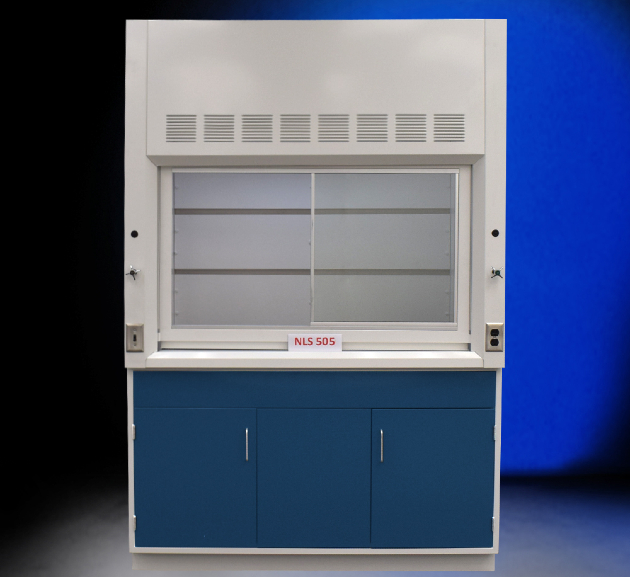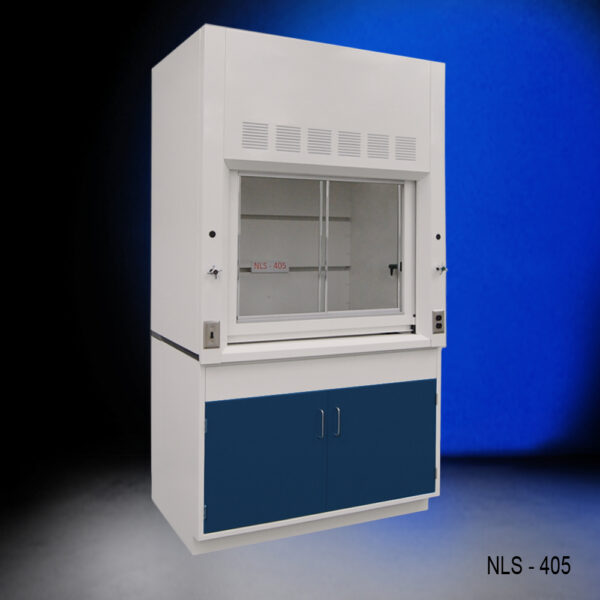In any laboratory environment, few tools are as central to chemical safety as the fume hood. Designed to capture and contain harmful vapors, gases, and particulates, fume hoods are vital in protecting personnel from exposure to hazardous substances. Yet, despite their importance, these safety devices are often misused—not through neglect, but through a quiet compromise: using them as storage cabinets.
At first glance, this might seem harmless. After all, why not keep a few extra bottles or tools within easy reach? But this common practice introduces serious safety, operational, and compliance risks that can jeopardize both personnel and property.
Let’s explore what fume hoods are truly designed for, why using them as storage is dangerous, and what safer alternatives labs should consider.
What Fume Hoods Are Designed For
Fume hoods are engineered as local exhaust systems to ventilate airborne contaminants generated during chemical procedures. They pull hazardous vapors away from the breathing zone of the user and expel them safely outside the building or through appropriate filtration.
Their design emphasizes containment, airflow consistency, and user protection—especially during high-risk activities such as mixing volatile reagents or heating chemicals. These devices are not meant to function as general-purpose storage units; in fact, storing materials in them compromises their intended performance.
Why Using Fume Hoods as Storage Is Dangerous
Placing chemical containers, tools, or equipment inside a fume hood—especially one that is in active use—introduces multiple hazards:
1. Obstructed Airflow
Stored items disrupt the uniform airflow across the face of the hood, creating turbulence that reduces its ability to contain hazardous fumes. Even sealed containers can interfere with the airflow patterns necessary for effective operation.
2. Increased Fire and Explosion Risk
Fume hoods are often used for experiments involving ignition sources or reactive chemicals. Storing flammable or volatile substances nearby increases the severity of any accidental fire or explosion. A minor incident can escalate quickly when stored chemicals become involved.
3. Compromised Emergency Response
In the event of a fire or chemical spill, stored materials may hinder emergency access or be knocked over during containment efforts. Even if not directly involved, these items can become secondary hazards.
4. False Sense of Security
It’s easy to assume that a chemical stored in a fume hood is inherently safe due to the hood’s presence. This assumption can lead to lapses in proper labeling, segregation, and container maintenance—especially for toxic, odorous, or incompatible substances.
Real-World Incidents and Compliance Issues
Numerous laboratory audits and safety inspections have flagged improper fume hood storage as a recurring violation. In some cases, this practice has contributed to OSHA citations and institutional penalties. For instance, a 2022 incident at a university research lab involved a small fire that quickly escalated because flammable solvents had been stored inside the hood. Although no one was injured, the lab suffered extensive damage and operational downtime.
Even without accidents, storing materials in fume hoods may violate EH&S policies and compromise compliance with ANSI/AIHA Z9.5 or NFPA standards, especially if incompatible chemicals are stored without segregation.
Related: 6 Fume Hood Mistakes You Didn’t Know You Were Making
Safer Alternatives for Chemical Storage
To maintain safety without sacrificing convenience, laboratories should explore proper alternatives:
- Ventilated Chemical Storage Cabinets: Designed specifically for storing volatile or toxic substances, these cabinets maintain airflow and offer fire-rated construction.
- Dedicated Storage Hoods: If ventilation is required, a designated fume hood can be repurposed solely for storage, with clear signage prohibiting experimental use.
- Remote Storage Areas: Relocating bulk or rarely used chemicals to nearby satellite storage areas can free up bench space without compromising safety.
- Labeling and Segregation Practices: Proper chemical organization and labeling ensure that materials remain identifiable and compatible, even outside the hood.
Key Takeaways and Next Steps
Using fume hoods as storage devices may seem like a minor shortcut, but the consequences can be significant. From airflow disruption to fire hazards and compliance violations, the risks far outweigh the convenience.
Lab managers and technicians must champion a culture of safety by educating teams, reviewing storage protocols, and investing in proper containment systems. A well-maintained fume hood isn’t just a regulatory checkbox—it’s a frontline defense in your lab’s safety infrastructure.
Take action today:
- Audit your lab’s hoods for improper storage
- Designate proper areas for ventilated and non-ventilated storage
- Reinforce best practices during lab meetings and training sessions
Your fume hood should protect you, not become part of the hazard.
4′ Fisher American Fume Hood w/ Blue General Storage Cabinet
Elevate your laboratory with a 4-foot Fisher American (NLS 405) fume hood. Designed with a practical sash and baffles for protection, this hood comes equipped with functional storage cabinets, a work surface, service valves, an LED light, a switch, and an outlet. Customize your lab setup with optional features like a sink, gooseneck faucet, extra service valves, and outlets.
Note: Ensure seamless operation by hard-wiring all hoods and having a blower in place.



